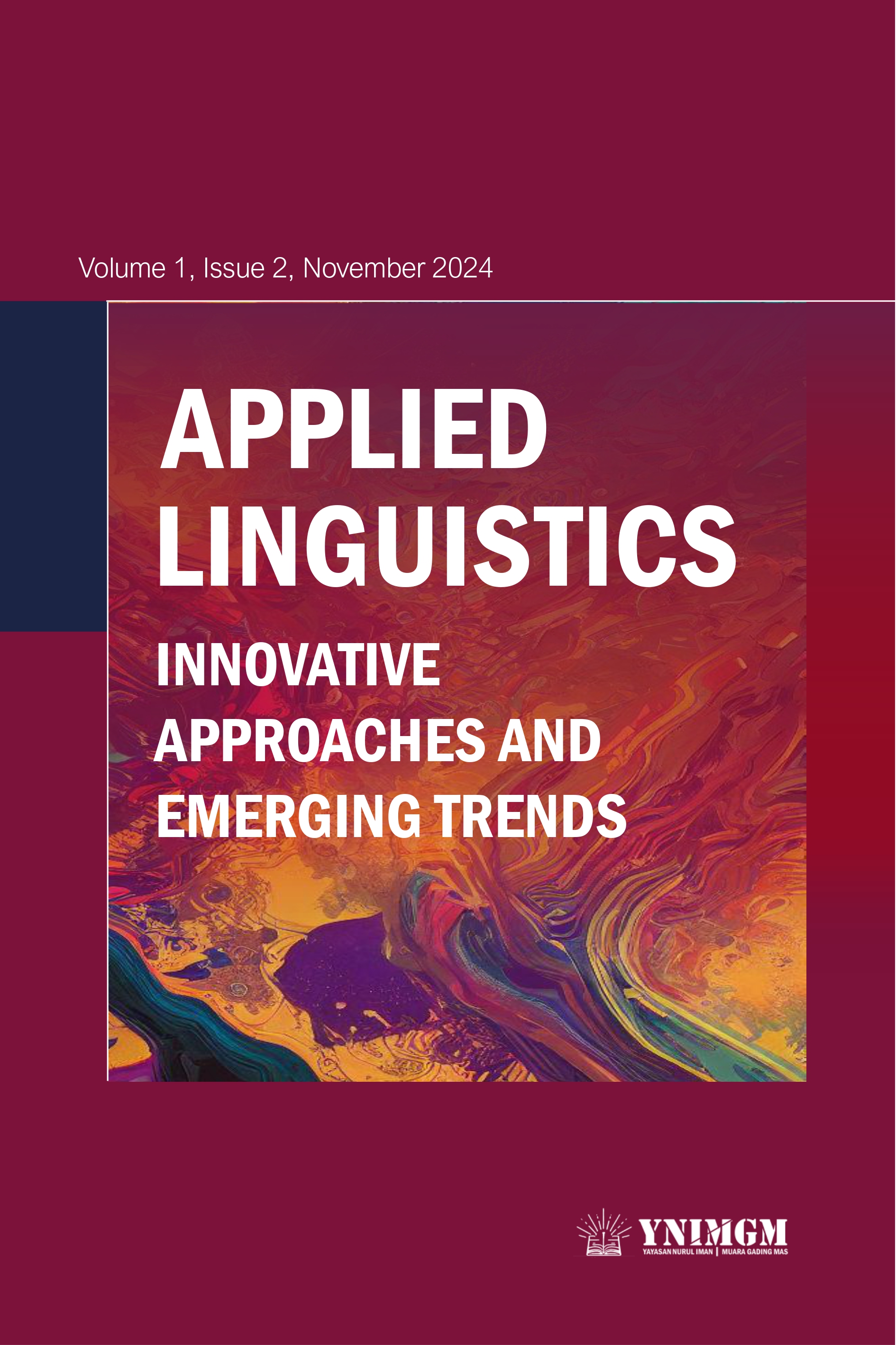Assessing The Correlation Between Smartphone Usage, Learning Autonomy, And Foreign Language Acquisition in Children
Main Article Content
Abstract
Various opinions exist regarding the use of smartphones and their effects on children's language acquisition. While some suggest that smartphones can positively influence learning habits and language skills, others argue they may have negative consequences. To explore this issue, a correlational study was conducted to assess the relationship between smartphone usage, self-directed learning (SDL), and foreign language acquisition (FLA). A questionnaire with 12 Likert-scale questions was administered to 29 parents of children aged 5 to 7 years. Following the collection and quantification of the data through correlation analysis, the researcher discovered that, although there was no significant correlation between smartphone usage and either SDL or FLA, a meaningful and significant relationship was identified between SDL and FLA. This finding suggests that children who exhibit effective self-directed learning behaviors are likely to achieve optimal outcomes in foreign language acquisition.
Downloads
Article Details

This work is licensed under a Creative Commons Attribution 4.0 International License.
How to Cite
References
Journals
Gerosa, T., & Gui, M. (2023). Earlier Smartphone Acquisition Negatively Impacts Language Proficiency, But Only for Heavy Media Users. Results From a Longitudinal Quasi-Experimental Study. Social Science Research, 114, 102915. https://doi.org/10.1016/j.ssresearch.2023.102915
Heuvel, M. van den, Ma, J., Borkhoff, C. M., Koroshegyi, C., Dai, D. W. H., Parkin, P. C., Maguire, J. L., & Birken, C. S. (2019). Mobile Media Device Use is Associated with Expressive Language Delay in 18-Month-Old Children. Journal of Developmental & Behavioral Pediatrics, 40(2), 99–104. https://doi.org/10.1097/dbp.0000000000000630
Jati, G. A. (2018). The Use of Smartphone Applications in English Language Teaching and Learning. Jurnal Sosioteknologi, 17(1), 144–153. https://doi.org/10.5614/sostek.itbj.2018.17.1.14
Kuhl, P. K. (2004). Early Language Acquisition: Cracking The Speech Code. Nature Reviews Neuroscience, 5(11), 831–843. https://doi.org/10.1038/nrn1533
Kuimova, M., Burleigh, D. D., Uzunboylu, H., & Bazhenov, R. (2018). Positive Effects of Mobile Learning on Foreign Language Learning. TEM Journal:Technology, Education, Management, Informatics, 7(4), 837–841. https://doi.org/10.18421/TEM74-22
Morris, T. H., & Rohs, M. (2021). The Potential for Digital Technology to Support Self-Directed Learning in Formal Education of Children: A Scoping Review. Interactive Learning Environments, 31(4), 1974–1987. https://doi.org/10.1080/10494820.2020.1870501
Mustafa, G., Abbas, M. A., Hafeez, Y., Khan, S., & Hwang, G.-J. (2019). Effectiveness of Ontology-Based Learning Content Generation for Preschool Cognitive Skills Learning. Interactive Learning Environments, 27(4), 443–457. https://doi.org/10.1080/10494820.2018.1484772
Nisa, A. un, & Siddiqua, N. (2015). The Excess Use of Mobile Phone Among Young Children and Its Effect on Their Academics. Journal of Mass Communication, 12, 76–100. https://jmcd-uok.com/index.php/jmcd/article/view/15
Pınar, Y., Ünal, F., & Pınar, N. K. (2018). Impact of Excessive Screen-Based Media Use on Early Childhood Development: A Short Review. Life Skills Journal of Psychology, 2(4), 297–305. https://doi.org/10.31461/ybpd.476289
Putra, R. A., Ashadi, A., & Aziz, M. F. (2022). Excessive Gadget Exposure and Children Speech Delay: The Case of Autism Spectrum Risk Factor. Script Journal: Journal of Linguistics and English Teaching, 7(1), 176–195. https://doi.org/10.24903/sj.v7i01.1077
Toh, W., & Kirschner, D. (2020). Self-Directed Learning in Video Games, Affordances and Pedagogical Implications for Teaching and Learning. Computers & Education, 154, 103912. https://doi.org/10.1016/j.compedu.2020.103912
Wrigglesworth, J. W. (2020). Using Smartphones to Extend Interaction Beyond the EFL Classroom. Computer Assisted Language Learning, 33(4), 413–434. https://doi.org/10.1080/09588221.2019.1569067
Books
Biemiller, A., & Meichenbaum, D. (2017). The Nature and Nurture of The Self-Directed Learner. In The Evolution of Cognitive Behavior Therapy (pp. 1–10). Routledge, Taylor & Francis. https://doi.org/10.4324/9781315748931
Bloomfield, L. (1984). Language. University of Chicago Press.
Deci, E. L., & Ryan, R. M. (2004). Handbook of Self-Determination Research. University Rochester Press.
Field, A. (2024). Discovering Statistics Using IBM SPSS Statistics (6th ed.). SAGE Publications Ltd.
Hirsh-Pasek, K., & Golinkoff, R. M. (2008). How Babies Learn to Talk. Oxford University Press.
Johnson, M. (2008). A Philosophy of Second Language Acquisition. Yale University Press. https://yalebooks.yale.edu/book/9780300100266/a-philosophy-of-second-language-acquisition/
Josephine, M., & Huertas-Abril, C. A. (2024). Indonesian Teachers’ and Families’ Perspectives on Smartphones for Early Second Language Acquisition. In S. Papadakis & M. Kalogiannakis (Eds.), New Approaches in Mobile Learning for Early Childhood Education (pp. 25–59). IGI Global. https://doi.org/10.4018/979-8-3693-2377-9.ch002
Knowles, M. S. (1975). Self-directed Learning: A Guide for Learners and Teachers. Cambridge Adult Education.
Lenneberg, E. H. (1967). Biological Foundations of Language. Wiley.
Ortega, L. (2011). Second Language Acquisition. In J. Simpson (Ed.), The Routledge Handbook of Applied Linguistics (1st ed., pp. 1–14). Routledge, Taylor & Francis. https://doi.org/10.4324/9780203835654
Yale, K., Nisbet, R., & Miner, G. D. (2017). Handbook of Statistical Analysis and Data Mining Applications (2nd ed.). Elsevier Ltd. https://shop.elsevier.com/books/handbook-of-statistical-analysis-and-data-mining-applications/yale/978-0-12-416632-5
Zimmerman, B. J. (1989). Models of Self-Regulated Learning and Academic Achievement. In B. J. Zimmerman & D. H. Schunk (Eds.), Self-Regulated Learning and Academic Achievement Theory, Research, and Practice (pp. 1–25). Springer-Verlag New York Inc. https://doi.org/10.1007/978-1-4612-3618-4

